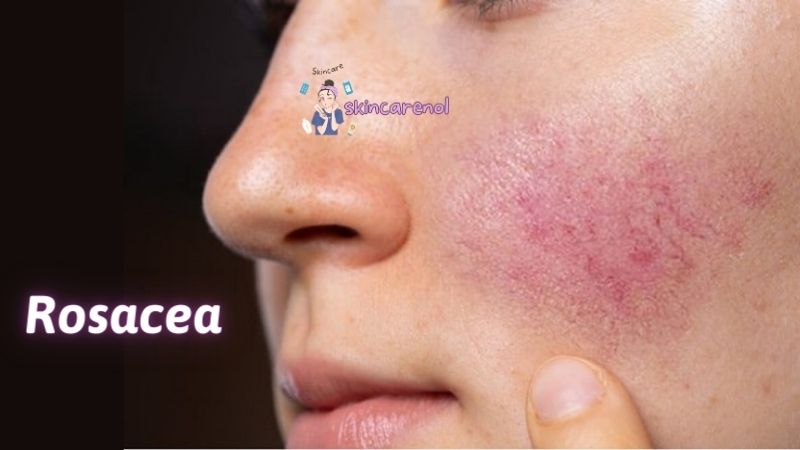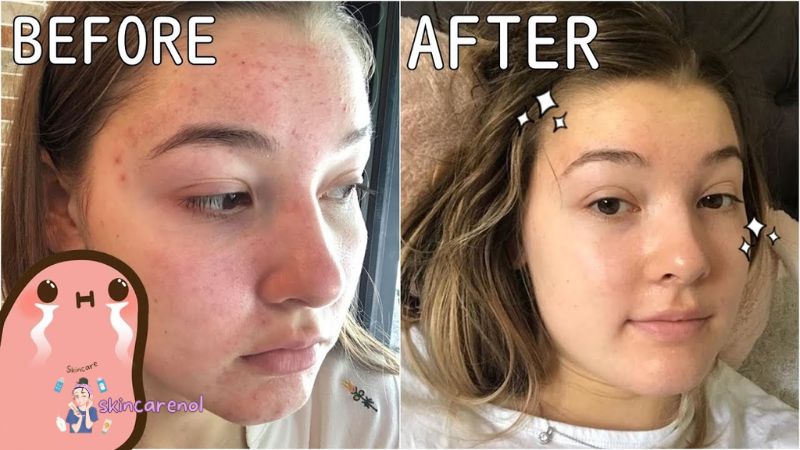Table of Contents
TogglePassword Generator
Living with rosacea can be challenging, but with the right skincare routine, managing its symptoms becomes more manageable. A gentle and calming approach is key to soothing inflammation, reducing redness, and promoting overall skin health. In this comprehensive guide, Skincareno1 will delve into crafting a skincare routine for rosacea, emphasizing gentle products and effective strategies to help you achieve a clearer, calmer complexion.
Understanding Rosacea:
Before diving into the specifics of a skincare routine for rosacea, it's essential to understand this chronic skin condition. Rosacea is characterized by facial redness, visible blood vessels, bumps, and sometimes, thickened skin. While its exact cause remains unknown, factors such as genetics, abnormal blood vessels, and inflammation are believed to play a role. Triggers like sun exposure, spicy foods, alcohol, and stress can exacerbate symptoms, making managing rosacea a multifaceted challenge.

Skincare Routine for Rosacea: A Step-by-Step Guide
1. Cleanser: The Foundation of Your Routine
The cornerstone of any skincare routine for rosacea is a gentle, non-irritating cleanser. When selecting a cleanser, opt for a formula specifically designed for sensitive skin and free of harsh ingredients such as fragrance, alcohol, and sulfates. Look for cleansers with calming ingredients like chamomile or aloe vera, which can help soothe inflammation and reduce redness. Cleansing your skin morning and night is essential for removing dirt, oil, and impurities without stripping away its natural moisture barrier.
2. Toner (Optional): Balancing Skin's pH
While not essential, a toner can be a beneficial addition to your skincare routine for rosacea, provided it's formulated with gentle, soothing ingredients. Look for alcohol-free toners that contain hydrating and calming ingredients like rose water or witch hazel. Toning can help balance the skin's pH levels, tighten pores, and prepare the skin for subsequent skincare products. However, if you find that toners exacerbate your rosacea symptoms, feel free to skip this step.

3. Treatment: Targeting Inflammation and Redness
Incorporating a targeted treatment into your skincare routine can help address inflammation and redness associated with rosacea. Niacinamide, azelaic acid, and sulfur are all effective ingredients for calming and soothing sensitive skin. These treatments can be found in serums, creams, or gels and should be applied sparingly to affected areas after cleansing and toning. It's essential to patch-test new treatments and introduce them gradually to ensure they don't trigger flare-ups.
4. Moisturizer: Hydrating and Protecting the Skin Barrier
A gentle, fragrance-free moisturizer is a crucial step in any skincare routine for rosacea. Look for a lightweight formula that contains hydrating ingredients like hyaluronic acid or ceramides to replenish moisture without clogging pores or causing irritation. Moisturizing twice daily can help strengthen the skin's natural barrier, reduce sensitivity, and provide relief from dryness and tightness. Apply moisturizer after treatment to lock in hydration and create a protective barrier against environmental aggressors.
5. Sunscreen: Shielding Against UV Damage
Sun protection is paramount for managing rosacea, as UV exposure can trigger flare-ups and exacerbate symptoms. Choose a broad-spectrum sunscreen with SPF 30 or higher and opt for a physical (mineral) sunscreen containing zinc oxide or titanium dioxide. These ingredients provide effective protection against both UVA and UVB rays without irritating sensitive skin. Apply sunscreen generously and reapply every two hours, especially if you're spending time outdoors.

6. Nighttime Treatment (Optional): Enhancing Skin Repair
While not necessary for everyone, incorporating a nighttime treatment can help repair and renew the skin while you sleep. Look for products containing soothing ingredients like peptides, antioxidants, or gentle retinoids, which can help improve skin texture and tone without causing irritation. Apply your nighttime treatment after cleansing and moisturizing, allowing it to penetrate the skin overnight and deliver maximum benefits.
7. Avoid Triggers: Identifying and Minimizing Irritants
Identifying and avoiding triggers is essential for managing rosacea and preventing flare-ups. Common triggers include spicy foods, alcohol, hot beverages, extreme temperatures, and certain skincare products with harsh ingredients. Pay attention to how your skin reacts to different stimuli and make adjustments accordingly. By minimizing exposure to triggers, you can help keep your rosacea symptoms under control and maintain a clear, calm complexion.
8. Consult a Dermatologist: Seeking Professional Guidance
If you're struggling to manage your rosacea or if your symptoms are severe, don't hesitate to seek professional help. A dermatologist can provide personalized recommendations and may prescribe medication or other treatments to help control your symptoms. They can also offer valuable advice on skincare products and routines tailored to your specific needs and concerns. Working with a dermatologist can empower you to take control of your rosacea and achieve healthier, happier skin.
Final Words
Crafting a skincare routine for rosacea requires patience, diligence, and a gentle touch. By choosing soothing and non-irritating products, avoiding triggers, and seeking professional guidance when needed, you can effectively manage your symptoms and achieve a clearer, calmer complexion. Remember that consistency is key, and with time, you can find a routine that works best for your unique skin needs. Embrace the journey towards healthier, happier skin, one gentle step at a time.
Related Posts:
- Understanding the Culprits: Why is My Skincare Pilling?
- The Essential Guide to Building an Ordinary Skincare…
- How Much Is a Skincare Fridge? The Ultimate Guide to…
- The 10 Worst Skincare Products: What You Need to Know
- The Ultimate Guide to Skincare During Pregnancy:…
- Gentle Skincare Routine for Lupus Patients:…


